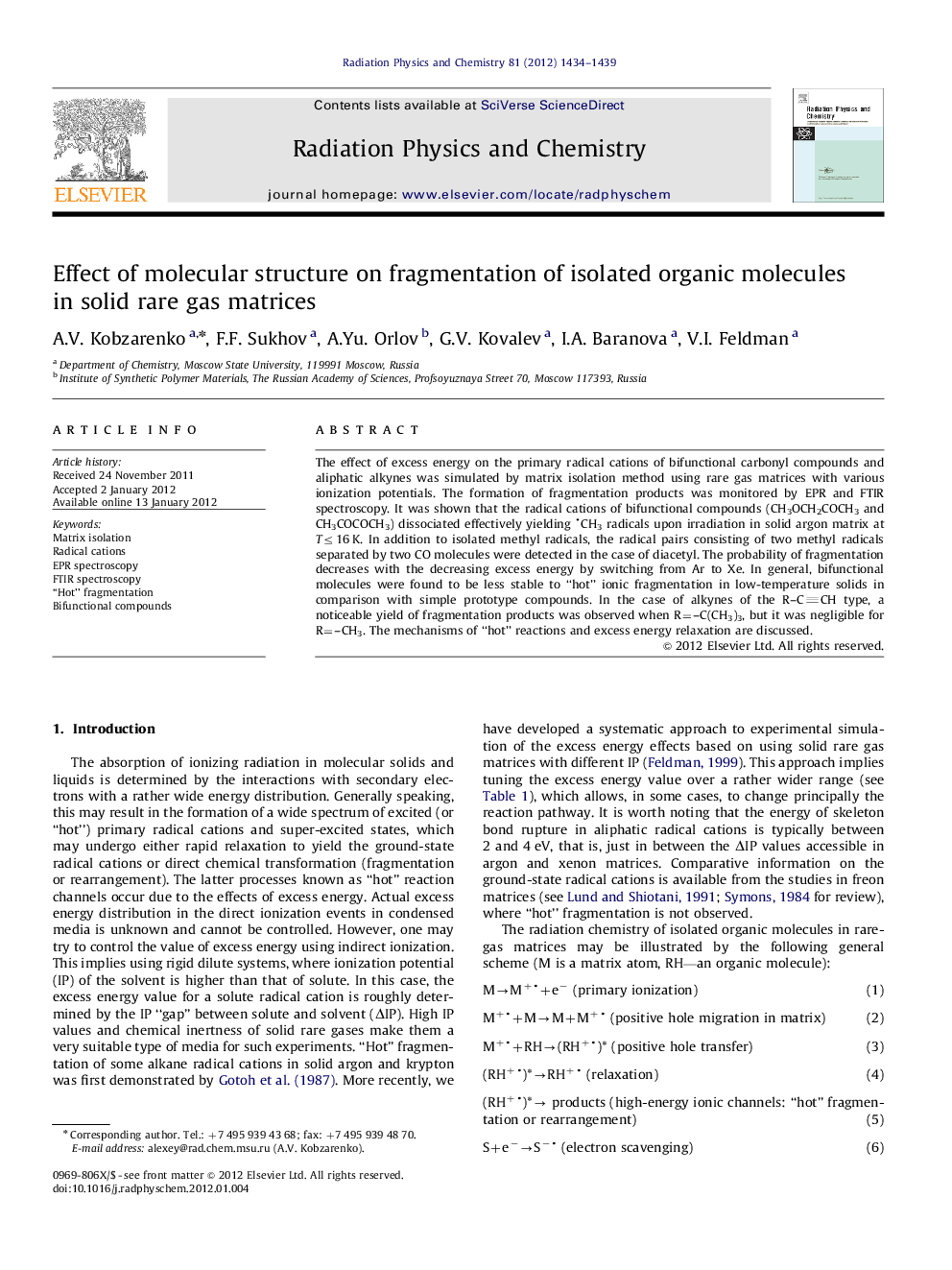| Article ID | Journal | Published Year | Pages | File Type |
|---|---|---|---|---|
| 1886485 | Radiation Physics and Chemistry | 2012 | 6 Pages |
The effect of excess energy on the primary radical cations of bifunctional carbonyl compounds and aliphatic alkynes was simulated by matrix isolation method using rare gas matrices with various ionization potentials. The formation of fragmentation products was monitored by EPR and FTIR spectroscopy. It was shown that the radical cations of bifunctional compounds (CH3OCH2COCH3 and CH3COCOCH3) dissociated effectively yielding CH3 radicals upon irradiation in solid argon matrix at T≤16 K. In addition to isolated methyl radicals, the radical pairs consisting of two methyl radicals separated by two CO molecules were detected in the case of diacetyl. The probability of fragmentation decreases with the decreasing excess energy by switching from Ar to Xe. In general, bifunctional molecules were found to be less stable to “hot” ionic fragmentation in low-temperature solids in comparison with simple prototype compounds. In the case of alkynes of the RCCH type, a noticeable yield of fragmentation products was observed when R=–C(CH3)3, but it was negligible for R=–CH3. The mechanisms of “hot” reactions and excess energy relaxation are discussed.
► Radiolysis of bifunctional organic compounds and alkynes. ► Dependence of “hot” fragmentation probability from molecular structure. ► Ions of bifunctional compounds are less stable than those of monofunctional ones. ► Alkynes are rather stable to “hot” fragmentation.
